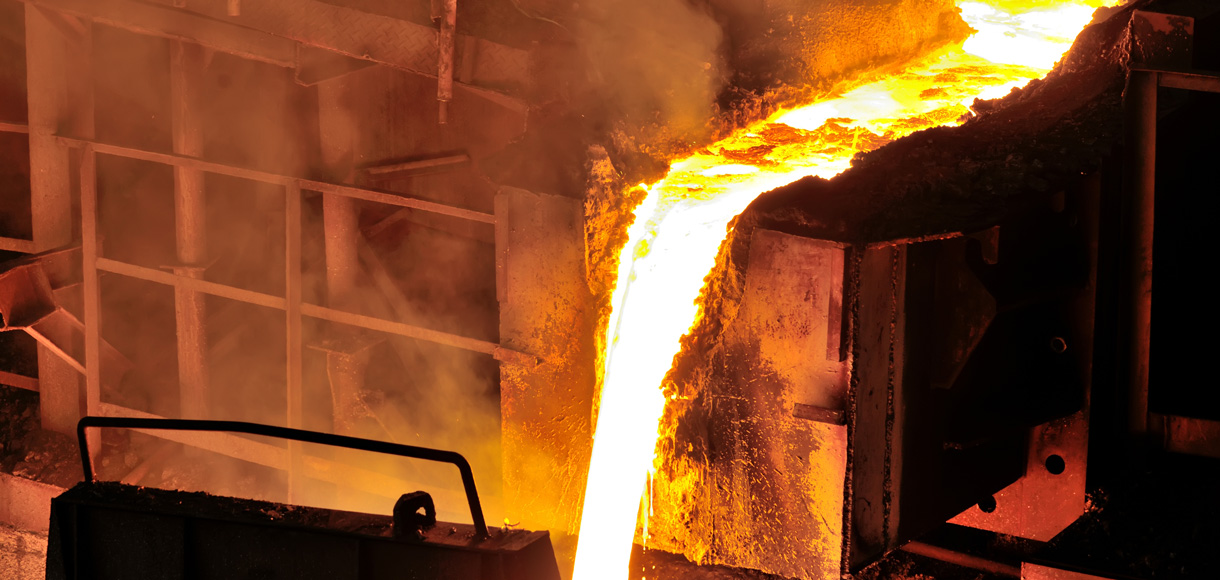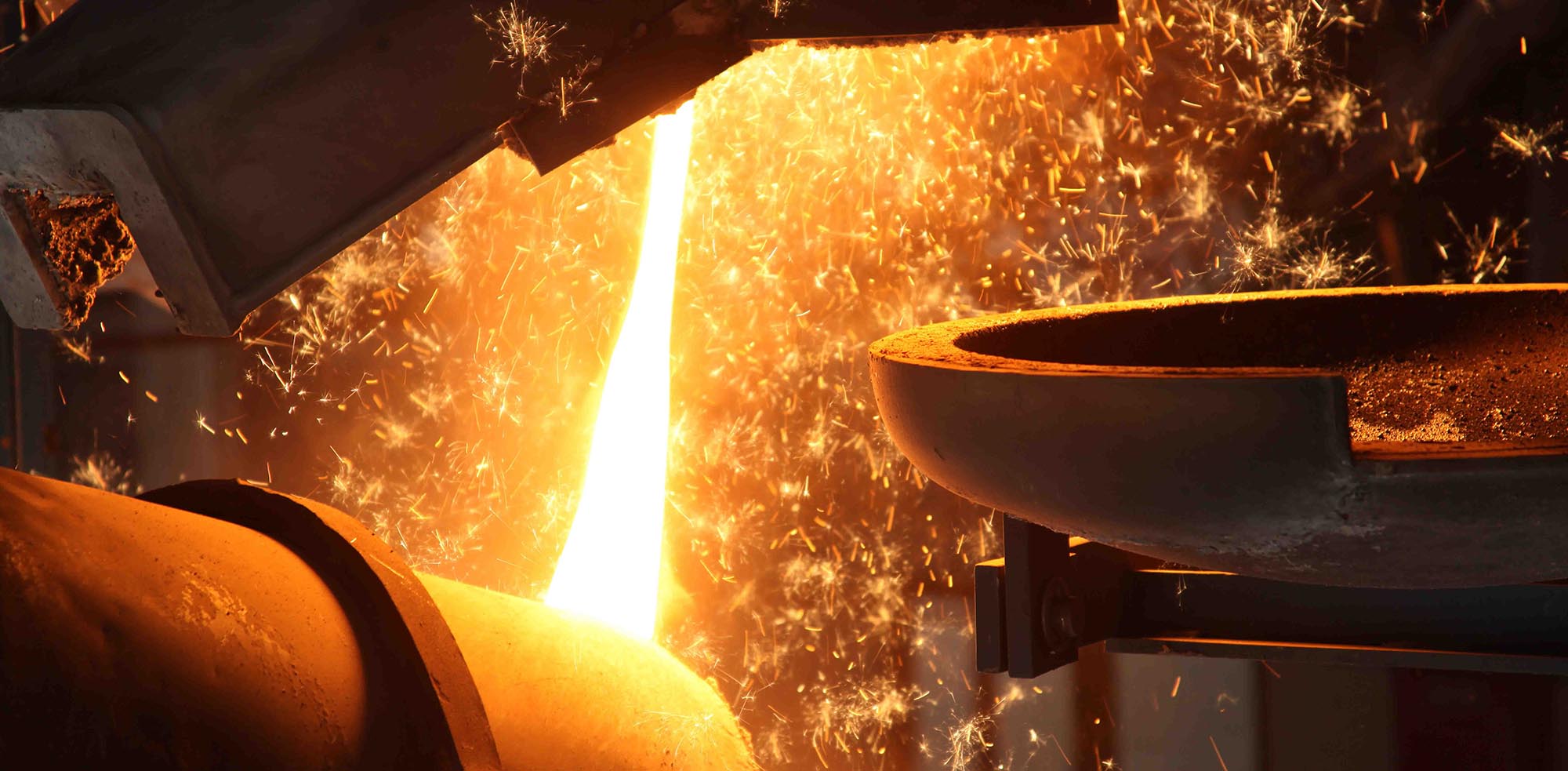Introducing the Intricacies of Style and Production at a Metal Foundry
The design and manufacturing processes at a metal foundry entail a series of elaborate actions. Each stage, from choosing resources to melting and spreading, plays a crucial function in the last item. Aluminum Foundry. Precision and top quality control are vital in this market. Yet, as innovation developments, brand-new innovations are emerging. These growths may redefine traditional practices. What effects do these adjustments hold for the future of metal shops?
The Melting Process: Transforming Raw Products Into Fluid Metal
The melting procedure works as the essential very first step in transforming basic materials into liquid steel, a treatment necessary for foundry procedures. This phase starts with the mindful choice of metals, which may consist of aluminum, iron, or copper, depending upon the desired end product. Each product is examined for pureness and composition to ensure suitable melting conditions.

As the metals reach their melting point, they convert from strong to liquid, enabling additional refinement. This procedure can likewise include the elimination of pollutants through slag formation, ensuring the top quality of the liquid steel. Ultimately, the successful conclusion of the melting process lays the foundation for subsequent metalworking procedures.
Molding Methods: Shaping Metal With Precision
Complying with the melting procedure, the following phase in steel foundry operations involves molding techniques that shape the fluid steel right into wanted forms. Various approaches are used, each selected based upon the certain demands of the task. Sand casting, among one of the most common strategies, makes use of a blend of sand and binder to create molds that can be quickly formed and reused. An additional approach, investment casting, involves creating a wax pattern that is covered in a ceramic covering, permitting detailed layouts and high precision.
Pass away spreading, in contrast, makes use of high-pressure to inject liquified metal right into steel molds, causing durable and uniform products. Furthermore, the option of molding technique influences the cooling rate, surface coating, and dimensional precision of the end product. Subsequently, understanding these methods is necessary for optimizing design and guaranteeing the successful production of metal parts customized to particular applications.
Casting Techniques: From Model to Manufacturing
Countless spreading techniques are utilized in steel factories to change from model development to major production. Among these approaches, sand spreading stands apart for its versatility and cost-effectiveness, making it ideal for both tiny and big production runs. Investment spreading, known for its accuracy, is commonly utilized for intricate geometries, permitting great details in the end product. Die casting, appropriate for high-volume manufacturing, uses liquified metal injected right into mold and mildews, giving outstanding surface finish and dimensional accuracy.

Quality Assurance: Making Sure Quality in Every Pour
While the spreading procedure can differ significantly between approaches, preserving rigorous quality assurance is necessary to identify that every pour satisfies the required requirements. Quality assurance in a metal foundry includes a series of methodical checks and analyses developed to determine issues early in the production procedure. This includes meticulous examinations of raw materials, tracking of melting temperatures, and assessments of mold integrity.
Foundry workers use various screening strategies, such as non-destructive screening and dimensional verification, to ascertain that castings attain preferred requirements. Additionally, adherence to developed industry criteria and accreditations improves the reliability of the end product.
Feedback loopholes are likewise vital; any discrepancies noted throughout high quality analyses are evaluated to refine processes and reduce future errors. Inevitably, a society of quality assurance promotes not only consumer fulfillment however likewise a track record for excellence in the affordable landscape of metal production.
Technologies and Technologies: The Future of Metal Foundries
The landscape of metal foundries is rapidly developing, driven by improvements in innovation and innovative practices. Automation and robotics are transforming standard workflows, boosting efficiency and image source precision throughout production. Automated pouring systems and robotic arms decrease human error, leading to greater high quality outputs. In addition, the assimilation of fabricated knowledge is allowing anticipating upkeep, optimizing devices performance, and lessening downtime.
Additive production is becoming a game-changer, allowing for rapid prototyping and the development of complicated geometries that were previously unattainable. This modern technology helps with the personalization of metal components, dealing with details client requirements without significant time hold-ups.
Sustainability is likewise a key emphasis, with shops embracing greener methods, such as reusing scrap metal and using energy-efficient heaters. These developments not only enhance performance however additionally line up with international efforts towards ecologically liable production, ensuring the future of steel shops stays affordable and robust in a changing commercial landscape.
Regularly Asked Concerns
What Sorts of Metals Are Commonly Used in Foundries?
Common steels utilized in foundries consist of light weight aluminum, cast iron, brass, steel, and bronze (Metal Foundry). Each metal possesses one-of-a-kind buildings, making them appropriate for numerous applications in sectors such as automobile, aerospace, and construction, among others
How Do Foundries Manage Waste and Environmental Effect?
Shops manage waste and ecological influence by carrying out reusing programs, making use of sophisticated purification systems, and adhering to rigorous regulatory standards. They typically buy sustainable innovations to decrease emissions and advertise responsible source usage throughout their procedures.
What Precaution Are in Location for Employees?
Foundries execute numerous precaution for employees, including personal safety tools, proper air flow systems, routine safety and security training, emergency action methods, and rigorous adherence to work-related health and wellness laws to decrease risks associated with dangerous products and devices.
Exactly how Long Does the Whole Manufacturing Refine Commonly Take?
The entire production process commonly takes a number of weeks, relying on the intricacy of the style and the materials made use of. Elements such as mold preparation, melting, and cooling time considerably influence the general period of manufacturing.
What Are the Key Tests Dealt With by Metal Factories Today?
Metal foundries today deal with difficulties such as climbing material expenses, fluctuating demand, ecological regulations, skilled labor lacks, and preserving quality assurance. These issues make complex manufacturing performance and success in a progressively competitive market.
The style and manufacturing processes at a metal foundry entail a collection of detailed actions. The melting process offers as the vital first step in transforming raw materials right into liquid steel, a treatment crucial for foundry operations. Following the melting process, the following stage in metal foundry operations includes molding strategies that form the liquid metal into desired forms. Numerous spreading approaches are utilized in metal foundries to change from official website model growth to major production. Quality control in a metal foundry includes a collection of methodical checks and assessments developed to recognize flaws early in the manufacturing procedure.